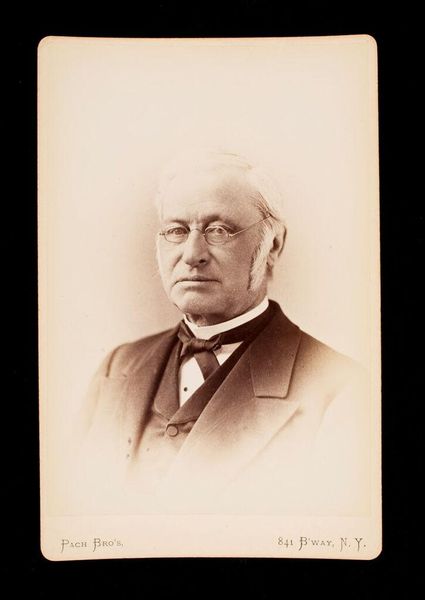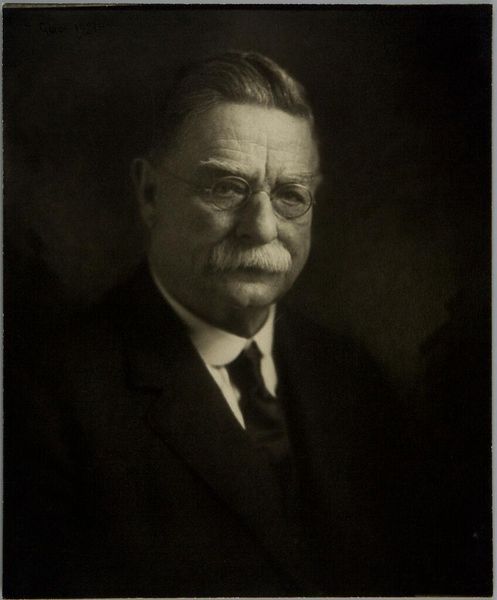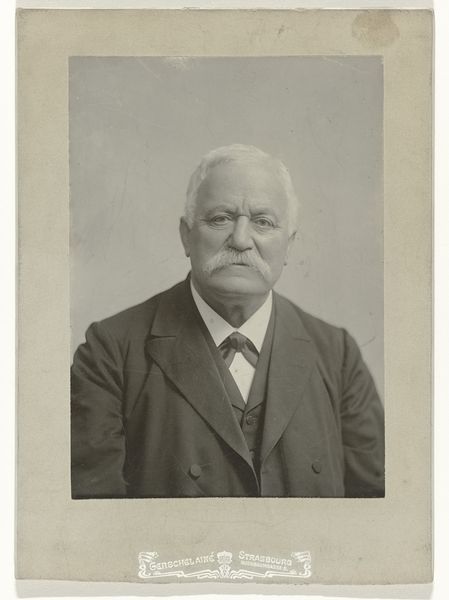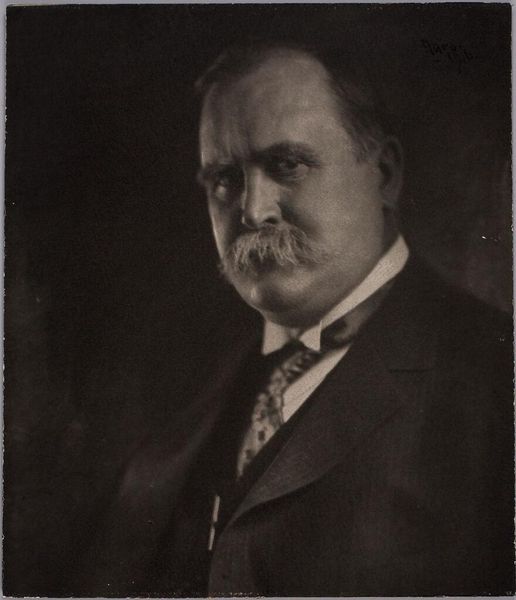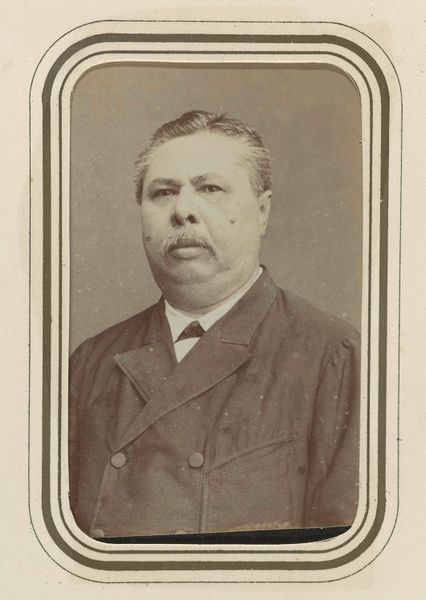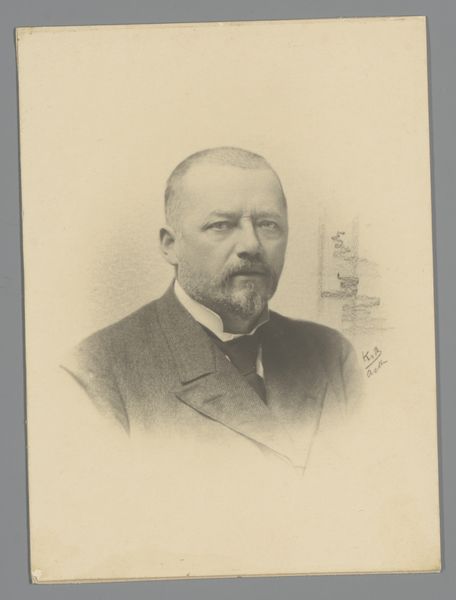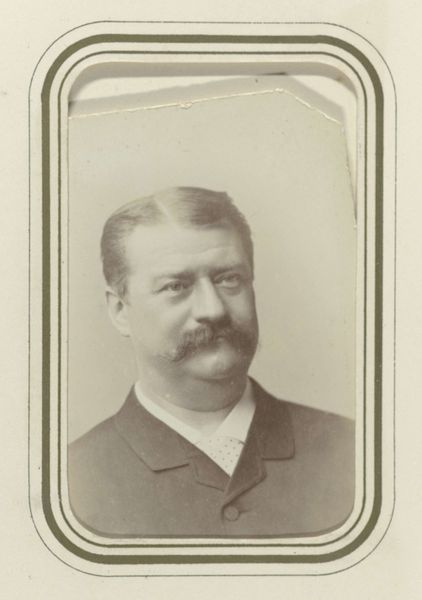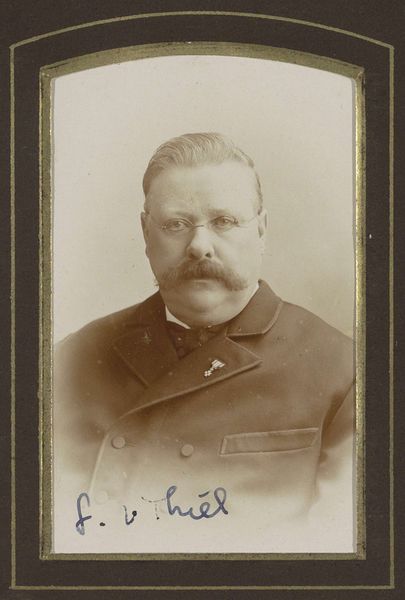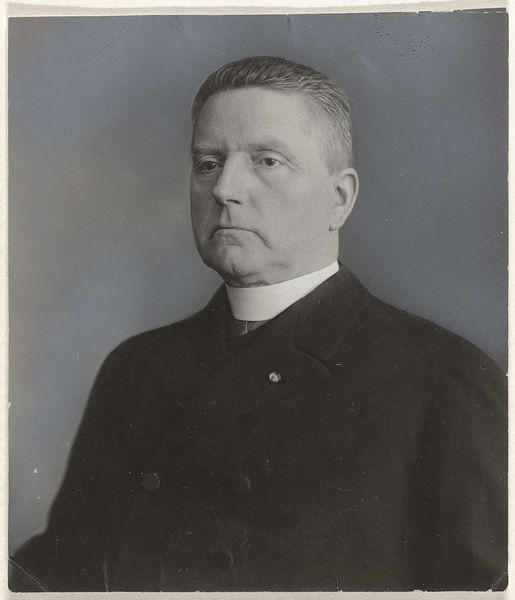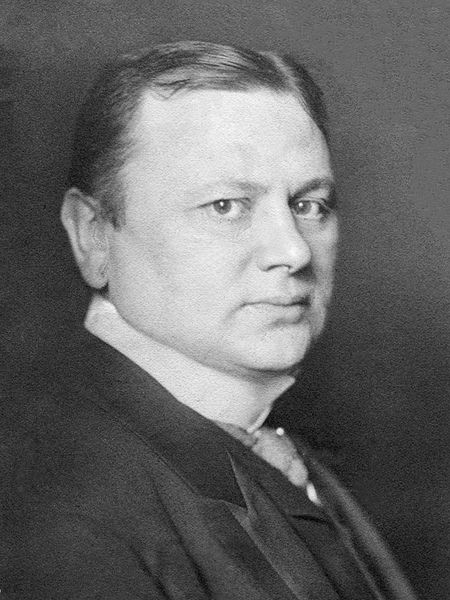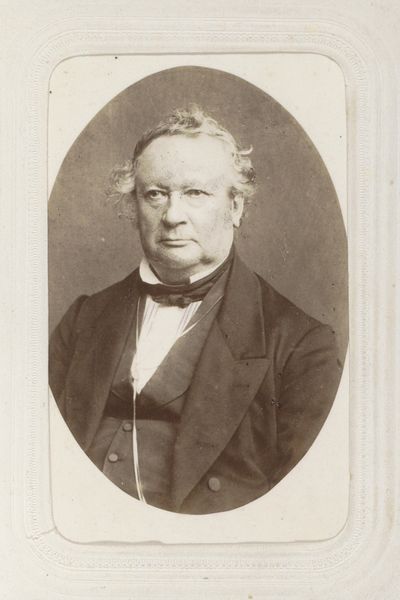
gelatin-silver-print, photography, gelatin-silver-print
#
portrait
#
gelatin-silver-print
#
photo restoration
#
low key portrait
#
portrait image
#
portrait
#
portrait subject
#
photography
#
portrait reference
#
gelatin-silver-print
#
united-states
#
portrait drawing
#
academic-art
#
portrait art
#
fine art portrait
#
realism
#
celebrity portrait
Dimensions: 21 1/16 x 17 in. (53.5 x 43.18 cm) (image, sheet)22 1/2 x 18 3/8 in. (57.15 x 46.67 cm) (mount)
Copyright: No Copyright - United States
Editor: So, here we have a gelatin-silver print of Theodore Roosevelt, taken around 1910 by the Baker Art Gallery. He looks rather stern, and his gaze is quite intense, almost confrontational. What strikes you most about this image? Curator: It’s interesting to consider how carefully crafted this image is for public consumption. Look at the pin on his lapel, the formal three-piece suit, the carefully groomed mustache, even the pince-nez spectacles perched on his nose. This isn't just a portrait; it's a construction of power, designed to project a specific image of Roosevelt to the American public. Editor: A construction of power? That's interesting. Do you mean it's not necessarily a candid depiction? Curator: Exactly. In that era, photography was increasingly accessible but also perceived as objective truth. Portrait studios like Baker played a crucial role in shaping public figures' personas. Think about it – who was Roosevelt trying to reach, and what message was he trying to convey with this formal, almost austere presentation? Editor: I suppose he wanted to be seen as serious and competent, someone the public could trust, perhaps? Less the adventurous "Rough Rider" and more the statesman. Curator: Precisely! And the proliferation of these kinds of portraits, particularly through mass media, solidified his public image. The control of that image, how it circulated and was received, was key to his continued political influence. Who controls the image, controls the narrative. Editor: So it's less about Roosevelt the man, and more about Roosevelt the…brand, in a way? That’s a perspective I hadn't fully considered. I see now how much social context can impact our understanding of even a seemingly straightforward portrait. Curator: Absolutely. By understanding the cultural and political forces at play, we can unpack the layers of meaning embedded in a seemingly simple image and start to grasp its broader significance in American history. It is important to realize that the reception and use of the artwork can give new and perhaps alternative perspectives on the figure of Roosevelt. Editor: Thanks. This has given me a lot to consider regarding photography, power, and the construction of public image!
Comments
No comments
Be the first to comment and join the conversation on the ultimate creative platform.
